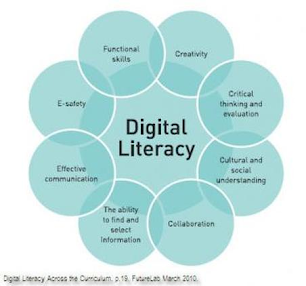Blog Post 2-Managing and Evaluating Reference Services
In today’s schools, the learning commons reference resources and services are an important part of the inquiry learning process for students. As Reidling mentions, “The purpose of reference services is to align information to flow efficiently from reference sources to those who need it.” (pg 5). Effectively managing the reference services encompasses many areas such as the organization of the learning commons, access to the resources, the support services the teacher librarian can offer, and evaluating the reference collection to assess when it needs weeding and the selection process for purchasing new reference resource-both print and online-within a budget.
Access and Organization
In the years when it was still called a school library, the reference section was often a small area with items such as encyclopedias, almanacs, atlases and dictionaries. These resources were mainly in print and were used occasionally during research projects. Reference resources are now digital and in print and have the potential to be used more frequently and effectively with the inquiry learning approach in schools. The teacher librarian can use strategies to promote access to the reference resources so that students can use them at home online, at school online, or at school in print. The print reference resources can be organized into an area of the learning commons with comfortable seating and easy access to the books. The teacher librarian can also set learning common hours so that students can come during their breaks, such as lunchtime, to access reference materials and support as well. If needed some of the reference resources can also be located within classrooms, such as dictionaries and atlases at the elementary level. The teacher librarian needs to collaborate with teachers to determine how to best meet the students’ needs with both reference resources and support.
The challenges here are budget and perhaps school policy. Accessing reference materials online is a decision that is usually made by school administration, with input from staff. However, even if a school decides not to purchase an online reference material the teacher librarian still has some options, such as providing links to free reference materials from other approved sources, such as the public library system. For example, the Calgary Public Library or Nasa for Kids.
The hours the teacher librarian is available to provide support and access to the reference resources, as well as which items are in the reference collection, are affected by the budget as well.
Support Services
Reference resources are important, but in order to be used effectively, students need to be taught how to use them. The teacher librarian can review the curriculum and collaborate with teachers to determine the students' needs and where to provide support. For example, this can encompass digital literacy lessons for online reference resources for an inquiry project, or with younger students who do better with the tactile experience of physically looking through a print reference resource, teaching students where to find what they need, such as how to use indexes in the back of encyclopedias, as well as where in the learning commons these resources are physically located. With the increase of online learning, especially during the pandemic, digital literacy has become more important as a set of skills teacher librarians can support teachers and their students with.
Evaluation
Evaluation of the reference resources of a learning commons are needed for effective collection development. The resources need to be assessed to determine if weeding is necessary, and new reference resources need to be assessed to determine if they are a good choice for selection. Most learning commons have policies for weeding and purchasing new reference resources and creating and updating those policies is part of managing the learning commons. The challenge here is funding, and ensuring that new purchases meet the needs of the school population. Another challenge is the debate between print or digital reference resources. Both are expensive but print reference resources go out of date more quickly than digital resources as they often update regularly. However, younger students especially may not have the digital skills to use online reference resources effectively yet and do better with the tactile experience of looking through a print reference resource. It can be a balancing act, but the bottom line is that taking staff and student input to see what kind of reference resources will be most useful for the teachers and students is the way best way to determine what kind of reference resource should be acquired.
Works Cited
1. Riedling, A. M., & Houston, C. (2019). Reference skills for the school librarian: Tools and tips. Libraries Unlimited.
2. FutureLabs. 2010. Digital Literacy Across the Curriculum. Retrieved from https://mypad.northampton.ac.uk/08292377/
3. Calgary Public Library. 2022. Digital Library. Retrieved from https://calgarylibrary.ca/read-learn-and-explore/digital-library/
4. Nasa. 2022. Space Place. Retrieved from https://spaceplace.nasa.gov/en/search/kids/

Hi Charmagne,
ReplyDeleteThank you for sharing the NASA site! That is not one I had heard of before for kids and I am always looking for digital resources that are engaging and easily accessible. I agree that print resources tend to have their benefits for younger students and asking staff is key when purchasing resources. Reference resources are especially expensive and it is unrealistic to update references from each subject regularly, as much as we would like to. Deciding which areas to prioritize is necessary to meet curricular needs and the needs of the school.